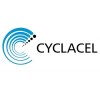
A Modified Dose of Rabbit Anti-thymocyte Globulin (rATG) in Children and Adults Receiving Treatment...
Acute Myeloid Leukemia (AML)Acute Lymphoid Leukemia (ALL)1 moreThe purpose of this study is to see if conditioning regimens that include personalized rabbit ATG (P-rATG) help the immune system recover sooner and decrease the chances of transplant-related side effects. Participants in this study will be children and adults who have acute leukemia or myelodysplastic syndrome (MDS), and will receive a standard conditioning regimen to prepare the body for an allogeneic hematopoietic cell transplant (allo-HCT). The conditioning regimen will include r-ATG, one of two combinations of chemotherapy, and possibly total body irradiation (TBI).

Persona Ti-Nidium Post-Market Clinical Follow-up
Knee Pain ChronicOsteoarthritis8 moreThe main objectives of this study are to evaluate overall clinical performance and safety of the Persona Ti-Nidium implant in total knee arthroplasty.

Dose Escalation and Expansion Study of CM313 in Subjects With Relapsed or Refractory Multiple Myeloma...
Multiple MyelomaLymphomaThis is a multi-center, open-label, dose escalation and dose expansion, Phase 1 study to evaluate the safety, tolerability, PK and preliminary anti-tumor activity of CM313. The dose escalation part will determine the MTD of CM313 in subjects with relapsed and/or refractory multiple myeloma (RRMM) or lymphoma based on a modified 3+3 dose escalation design (an accelerated dose titration design followed by traditional 3+3 dose escalation design). The dose expansion part includes two cohorts. Cohort 1 will evaluate the safety and preliminary anti-tumor activity of CM313 in combination with Dexamethasone in subjects with RRMM. Cohort 2 will evaluate the safety and preliminary anti-tumor activity of CM313 in combination with Rd regimen (Lenalidomide/Dexamethasone) in subjects with RRMM or newly diagnosed MM (NDMM).

Phase I Study of Anti-CD22 Chimeric Receptor T Cells in Patients With Relapsed/Refractory Hairy...
Hairy Cell LeukemiaHairy Cell Leukemia VariantBackground: CAR (Chimeric Antigen Receptor) T cell therapy is a type of cancer treatment in which a person s T cells (a type of immune cell) are changed in a laboratory to recognize and attack cancer cells. Researchers want to see if this treatment can help people with hairy cell leukemia (HCL). Objective: To test whether it is safe to give anti-CD22 CAR T cells to people with HCL. Eligibility: Adults ages 18 and older with HCL (classic or variant type) who have already had, are unable to receive, or have refused other standard treatments for their cancer. Design: Participants will be screened with the following: Medical history Physical exam Blood and urine tests Biopsy sample Electrocardiogram Echocardiogram Lung function tests Imaging scans Some screening tests will be repeated during the study. Participants may need to have a catheter placed in a large vein. Participants will have magnetic resonance imaging of the brain. Participants will have a neurologic evaluation and fill out questionnaires. Participants will have leukapheresis. Blood will be removed from the participant. A machine will divide whole blood into red cells, plasma, and lymphocytes. The lymphocytes will be collected. The remaining blood will be returned to the participant. Participants will get infusions of chemotherapy drugs. Participants will get an infusion of the anti-CD22 CAR T cells. They will stay at the hospital for 14 days. Then they will have visits twice a week for 1 month. After treatment, participants will be followed closely for 6 months, and then less frequently for at least 5 years. Then they will have long-term follow-up for 15 years.

A Study of JNJ-75276617 in Participants With Acute Leukemia
Acute LeukemiasAcute Myeloid Leukemia1 moreThe purpose of this study is to determine the recommended Phase 2 dose(s) (RP2D[s]) of JNJ-75276617 in Part 1 (Dose Escalation) and to determine safety and tolerability at the RP2D(s) in Part 2 (Dose Expansion).

Safety, Immunogenicity, Efficacy of Ad26.Mos4.HIV, MVA-BN-HIV and PGT121, PGDM1400, and VRC07-523LS...
HIVAcquired Immunodeficiency Syndrome5 moreA multicenter, randomized, parallel-group, placebo-controlled, double-blind, Phase 1/2a clinical study to investigate the safety, tolerability, immunogenicity and exploratory efficacy of a vaccine regimen consisting of an Ad26.Mos4.HIV prime and a boost with Modified Vaccinia Ankara (MVA)-BN-HIV in combination with broadly neutralizing antibodies (bNAb) PGT121, PGDM1400, and VRC07-523LS in human immunodeficiency virus type 1 (HIV-1)-infected study participants on suppressive anti-retroviral therapy (ART).

Study of Lacutamab in Peripheral T-cell Lymphoma
Peripheral T Cell LymphomaRelapse/RecurrenceThis is an open-label multicenter randomized non comparative phase II study to evaluate the safety and efficacy of the monoclonal anti-KIR3DL2 antibody Lacutamab in patients with Refractory/Relapsing (R/R) KIR3DL2 positive Peripheral T Cell Lymphoma (PTCL) : Not Other Specified (NOS), PTCL-TFH (including Angioimmunoblastic T-cell Lymphoma (AITL), Follicular T-cell lymphoma, Nodal peripheral T-cell lymphoma with TFH phenotype), Anaplastic large cell lymphoma (ALCL), Adult T-cell leukemia/lymphoma (ATL), Hepatosplenic T-cell lymphoma (HSTL), Enteropathy-associated T-cell lymphoma (EATL), Monomorphic epitheliotropic intestinal T cell lymphoma (MEITL), NK-T cell lymphoma (NKT) and Aggressive NK-cell leukemia (ANKL). The design is non comparative meaning that non comparison between arms will be performed as the control arm will ensure that the assumptions used for sample size calculation are verified. For that reason, randomization is unbalanced in favor of the experimental arm (2:1).

A Study to Evaluate VIP152 in Subjects With Relapsed/Refractory Chronic Lymphocytic Leukemia or...
Relapsed Non Hodgkin LymphomaChronic Lymphocytic Leukemia5 moreDetermine the safety, tolerability, pharmacokinetics, maximum tolerated dose (MTD) and recommended phase 2 dose (RP2D) of VIP152 in patients with Chronic Lymphocytic Leukemia (CLL) or Richter Syndrome

A Study to Investigate Fadraciclib (CYC065), in Subjects With Advanced Solid Tumors and Lymphoma...
Solid TumorAdult1 moreThis is a 2-part, phase 1/2, open-label, multicenter study designed to evaluate the safety, tolerability, PK, pharmacodynamics, PGx, and efficacy of fadraciclib administered orally BID. This study consists of Phase 1 and Phase 2 components in subjects with advanced solid tumors and lymphoma who have progressed despite having standard therapy or for which no standard therapy exists.

Phase 1 Study of F182112 in Patients With Relapsed or Refractory Multiple Myeloma
Dose-Escalation StudyRelapsed or Refractory Multiple MyelomaThis trial is a Multiple center, Open-label, dose escalation Phase Ⅰ clinical study. The purpose is to evaluate the safety and tolerability of F182112 when infused intravenously (IV) and determine the maximum tolerated dose (MTD) and/or the recommended Phase 2 dose (RP2D) of F182112 when infused IV.
